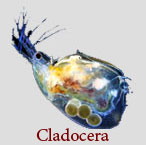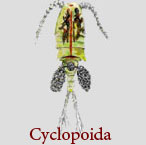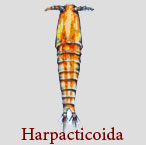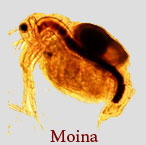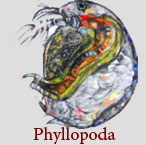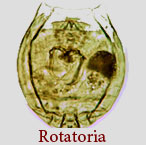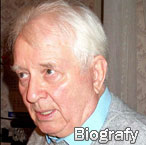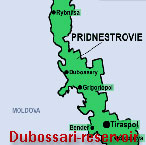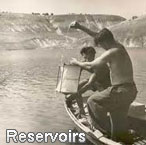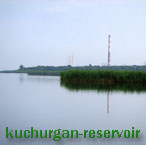|
|
|
|
|
THE BIOLOGICAL PRODUCTIVITY OF KUCHURGAN RESERVOIR WARMED ВY DISCHARGE FROM THE MOLDAVIAN POWER STATION
Power Station has the area of 3000 hectares and the middle depth of 3,5 m. is situated in the lower part of the river Dnestr of the valley and represents by it self the relict of the Pridnestrovsky liman and keeps on over 30 species relict of ponto-caspian fauna nowdays.
The reservoir is sated by spring-waters of the Dnestr and the river Kuchurgan. Morphologically the reservoir is subdivided into 3 districts: the lower – attached to the dam (1200 ha), the middle – (750 ha) and the upper (550 ha). Only the lower district is used for the cooling of the Power Station, owing to that the average year temperatura is become higher up 4°C, but in winter up 13-14° higher in reservoir in comparison with the natural temperatures.
With the introduction the Power Station in service and separating reservoir by water-regulative dam from the Dnestr, the average year mineralization of water in reservoir has become higher till 500 (year 1965) – 800 and more mg/l (year I968) with the simultanacus transition from hydrocarbonate range, group of calcium, into sulphatnohlorid range, groups of natrium-magnium. Under such condition the salt water stratification reached 164 mg/l, but its constant rigidity became higher from 5.35 till 7.15 mg-equlvalent/l.
The contents of the organic beings, mainly autochton origin in waters of reservoir, reised from 25 mg/l in year 1965 till 33 mg/l in year 1968, but the content of common (general) nitrogen till 1,13 mg/l and phosphorus – till 0.13 mg/l. The concentration of CO2 in the open part of the reservoir, at times reaches 20 mg/l, under the constant close to the normal rate of water saturation by free oxygen.
In the reservoir the yearlong production of macrophytes is increased from 30 – 40 tonn (year 1965) till 90 – 100 (year 1968) for account of widen areas with growth of Potamogeton,Vallisneria and other components of water vegetation.
The average gross production of phytoplancton (according to photosynthesis) is composed 0,91 mg O2/l per the day, but its pure production – 0,24 mg/l or 0,84 cal/l. The more intensive processes of productivity (coef. F/B 2.5 mg O2/l) and destruction (79 par cent) of the organic matter takes place in the lower district of the reservoir. Here is noticeable the maximum of the bacterium production (1554 thou. bact./ml.h.) under the reducing of time bacteria generation till 2,7 against 6 hours in the other districts. Grazing of bacteria by zooplankton in the low district at 2 and coef. P/B at 3 times higher, than in the other districts.
In the reservoir phytoplankton consists of 190 kinds, but its mass, in spite of perishing in the conduct system of the Power Station and grazing by fishes-phytophages, at times brings to intensive vegetation ofblue-green algae (5-6 milliard cells/l). Zooplankton consists of 173 taxons and the principle role (60-68 per cent) belongs to Rotatorians. The numerical composition of zooplankton in dependence of grazing by fishes- planktonophages and the action of the Power Station is decreased from 200 – 300 thou.spec./m³ to 140-146 thou. spec./m³ , and biomass – from 1.4 – 6.2 gram to 1.8 – 2.1 g/m³ . The bottom ciliates have a great taxonomiс divirsity (200 species). In those composition we observed constantly holotrichs, splrotrichs and peritrichs with the year average number 430 – 480 thou.sрес./m ² and biomass 0.2 g/m² . They use approximatly 750 k/ha bacteria during the vegetation period.
The benthos in the reservoir is kept within 157 – 160 species with predominance of oligochaets-chironomids-complex. The average dencity of it has decreased from 4059 spec./m² (year 1964)to 2942 spec./m² (year 1969). Numeraly predominate oligochaets (59 – 74 per cent), but in biomass – molluscs (91 – 89 per cent).
The preliminary results of investigations showed, that the usage of liman for technical and biological purposes from the point of economy is efficient.
© 1970. Авторские права на статью принадлежат М.Ф.Ярошенко., А.И.Набережному., Г.Г.Горбатенькому.,
Ф.П.Чорик., С.Е.Бызгу., Т.Д.Кривенцовой (АН Молд.ССР)
Использование и копирование статьи разрешается с указанием автора и ссылкой на первоисточник HERALD HYDROBIOLOGY
Related posts:
- Изучение коловраток в Молдавии В статье раскрывается история изучения коловраток, рассматриваются экологические условия их...
